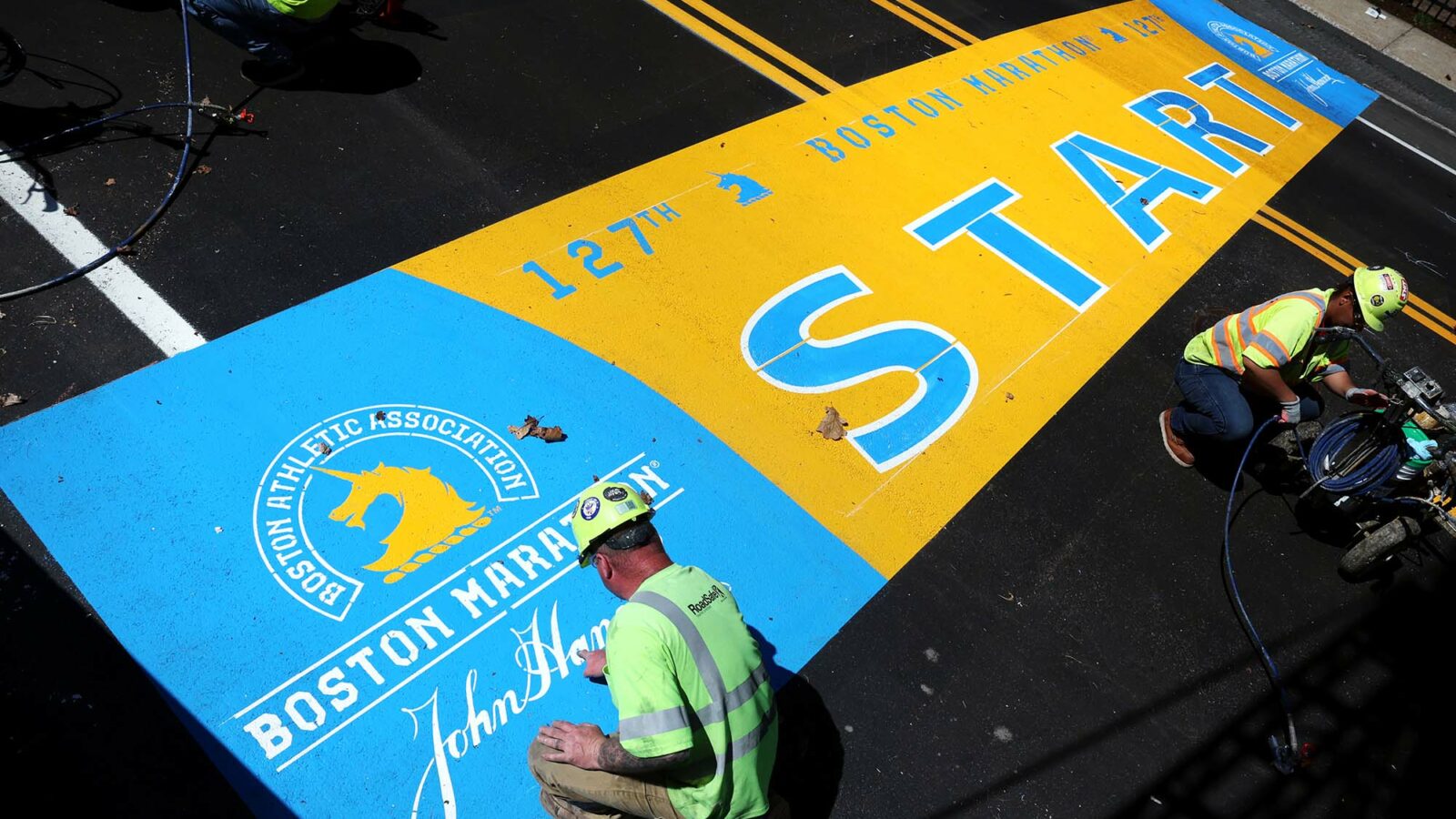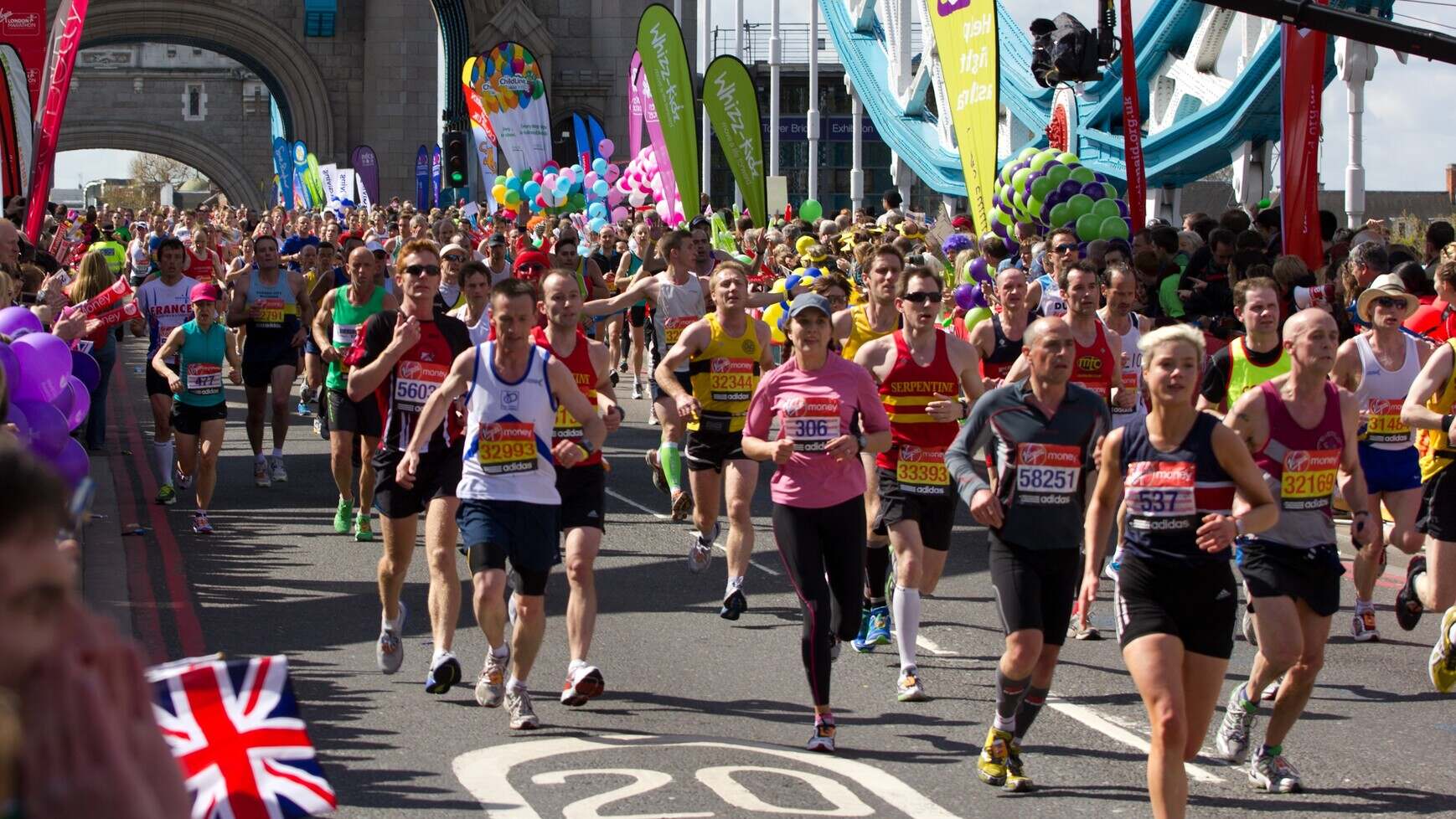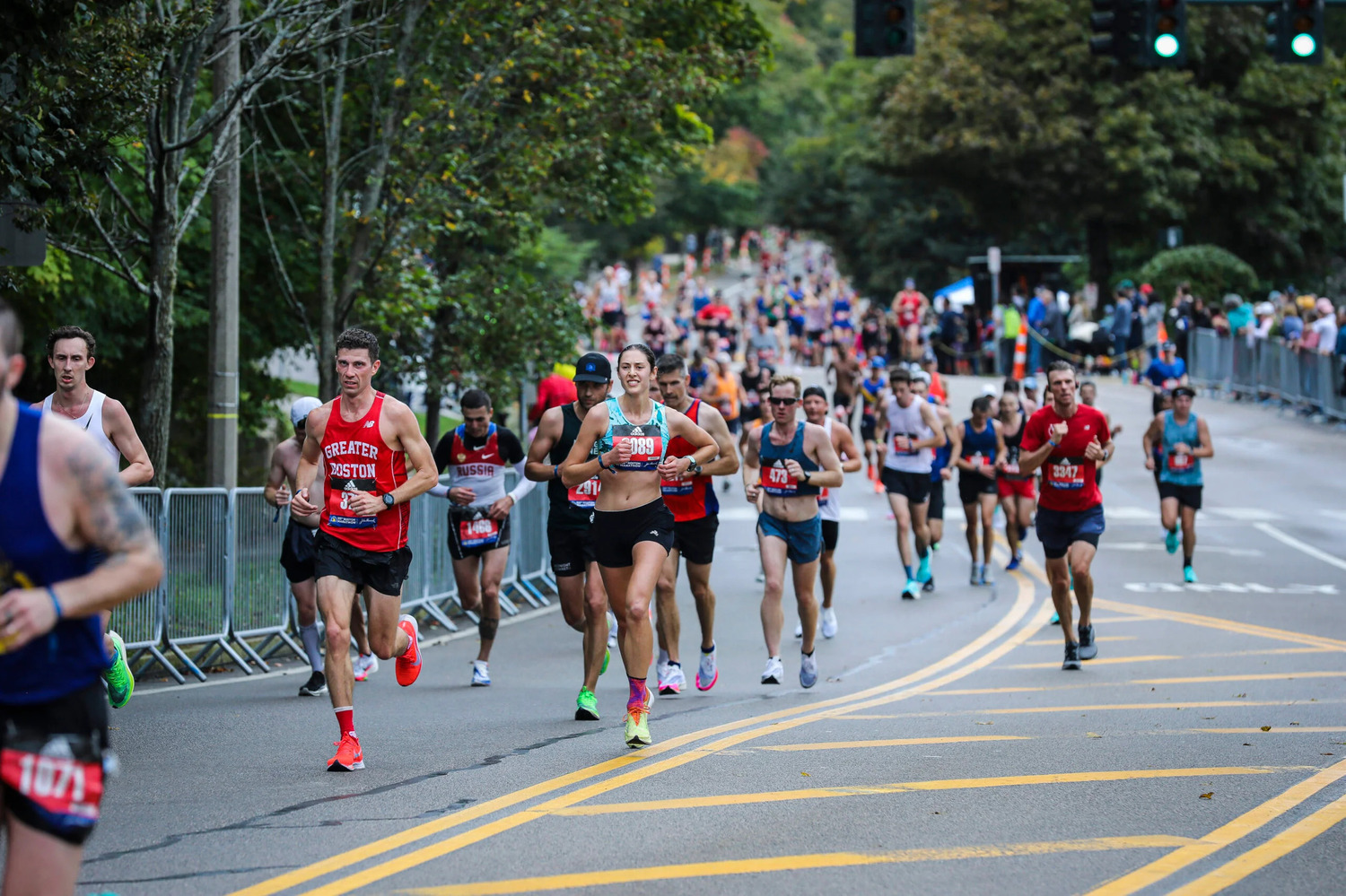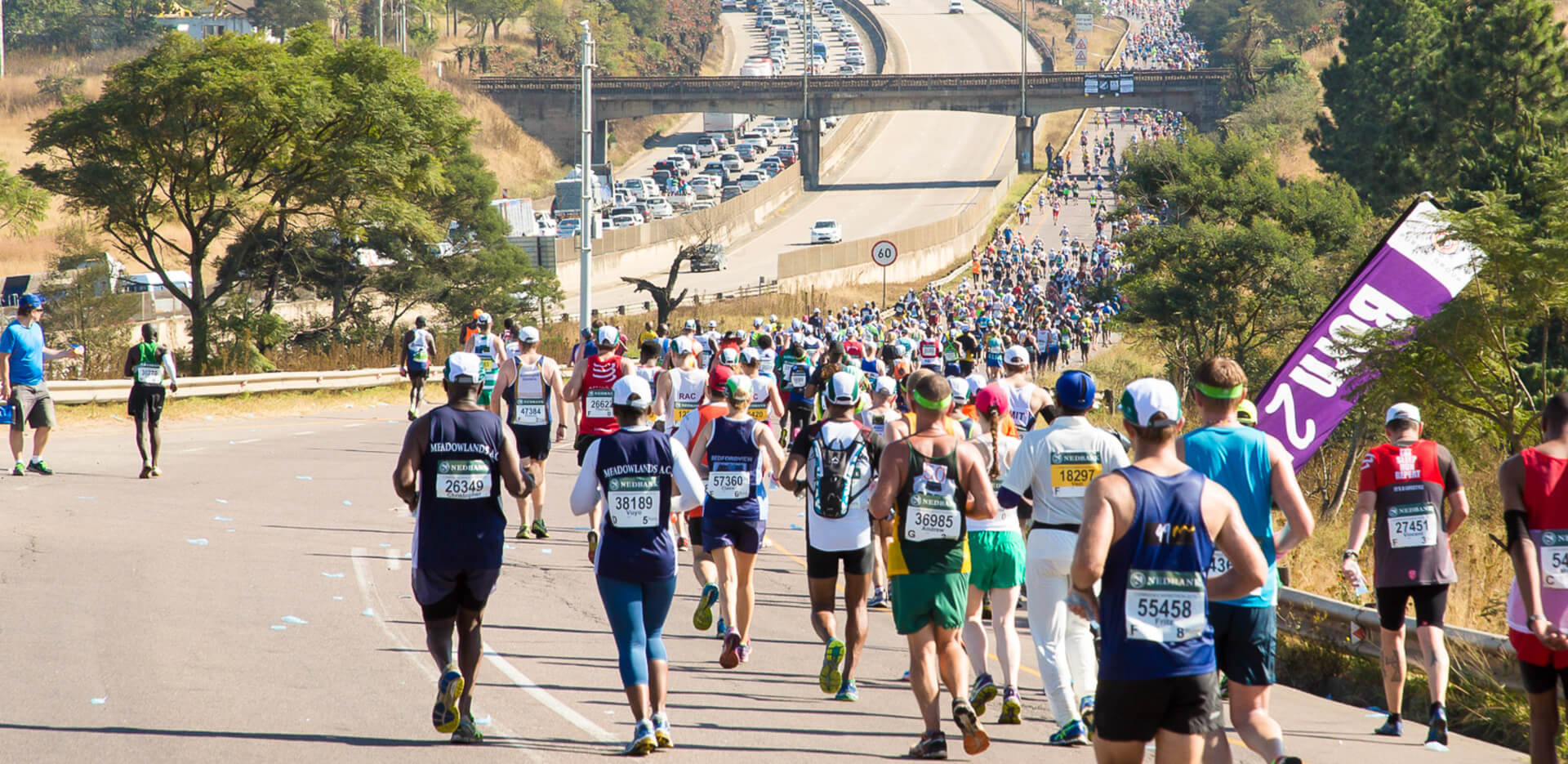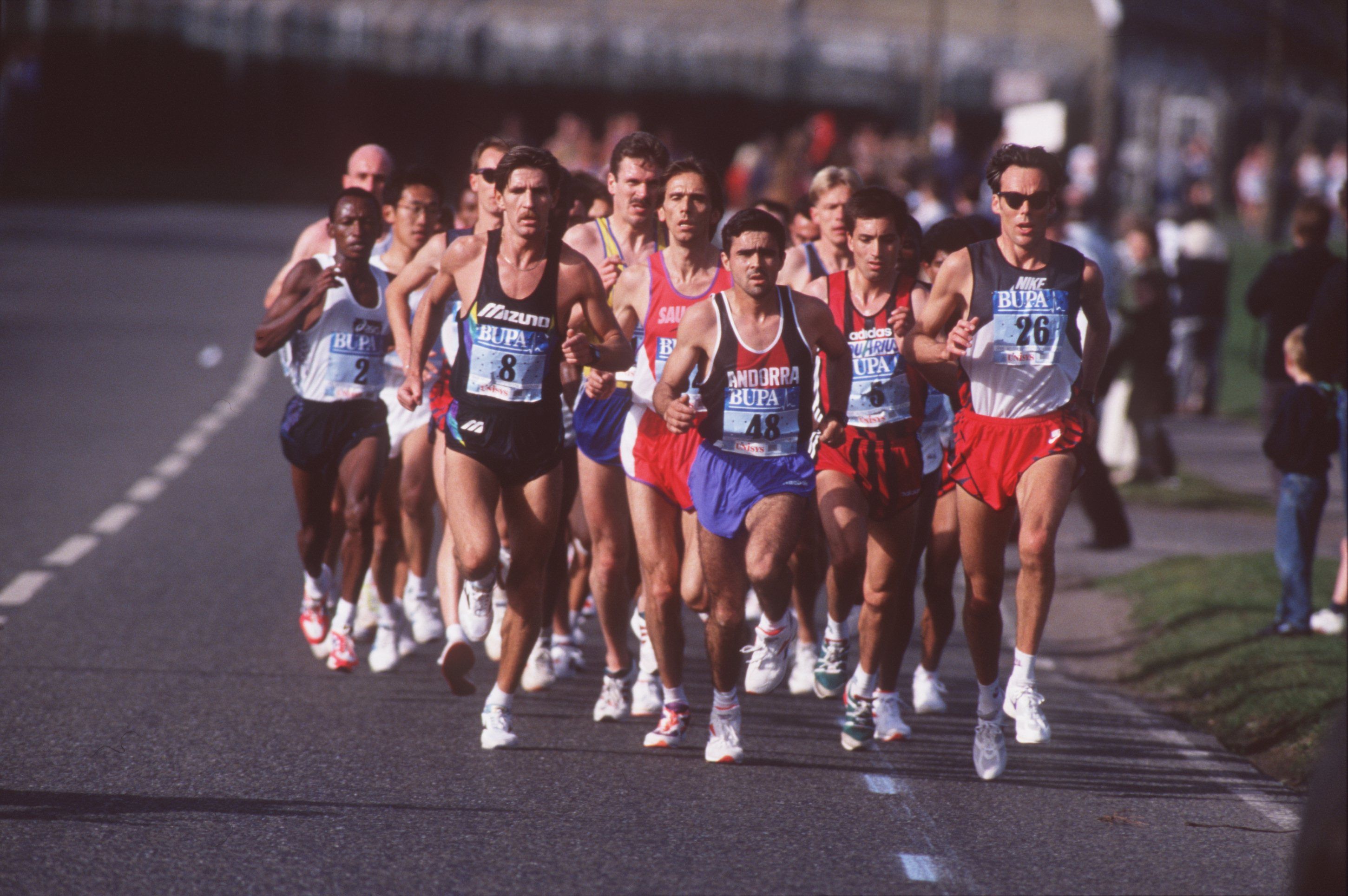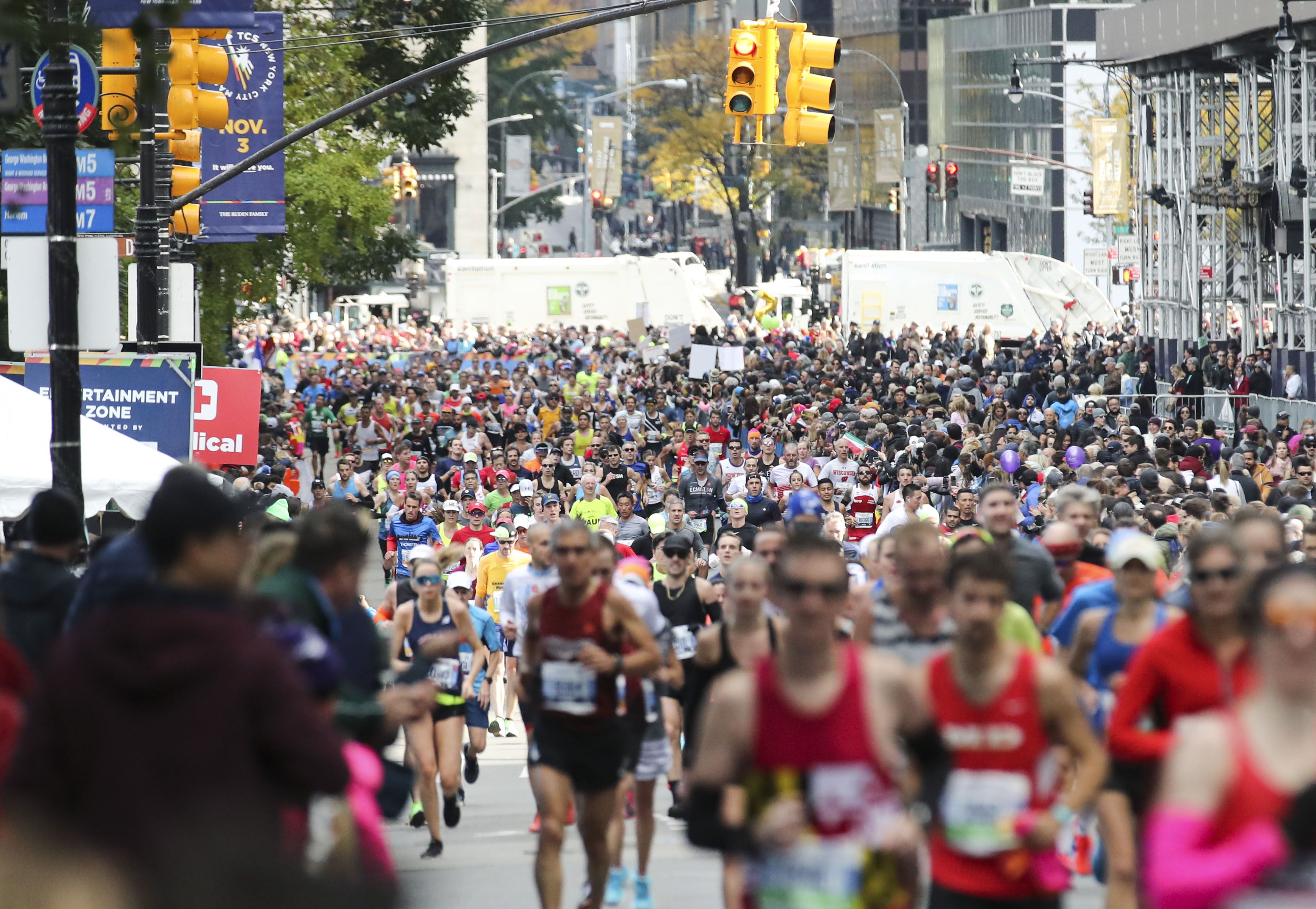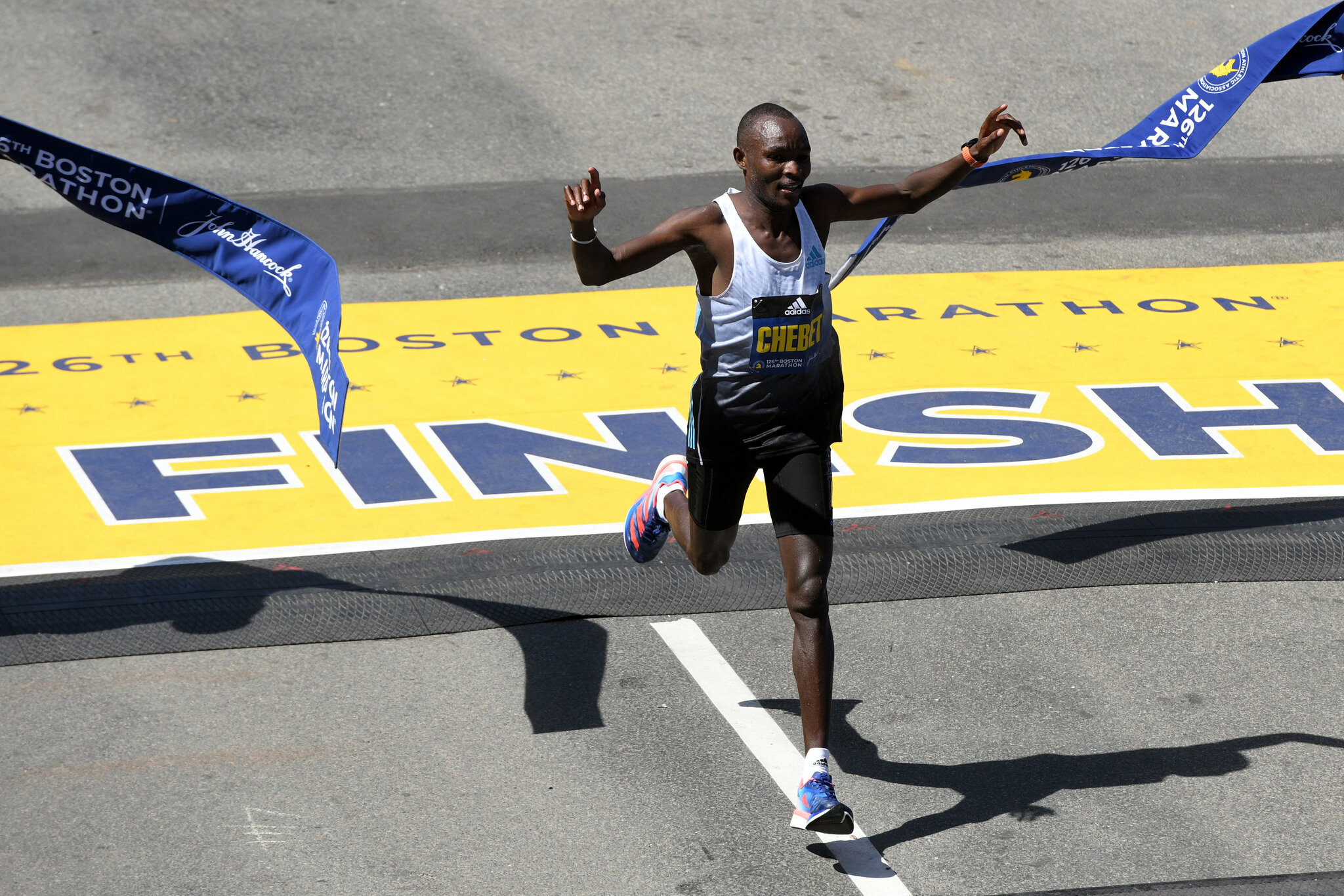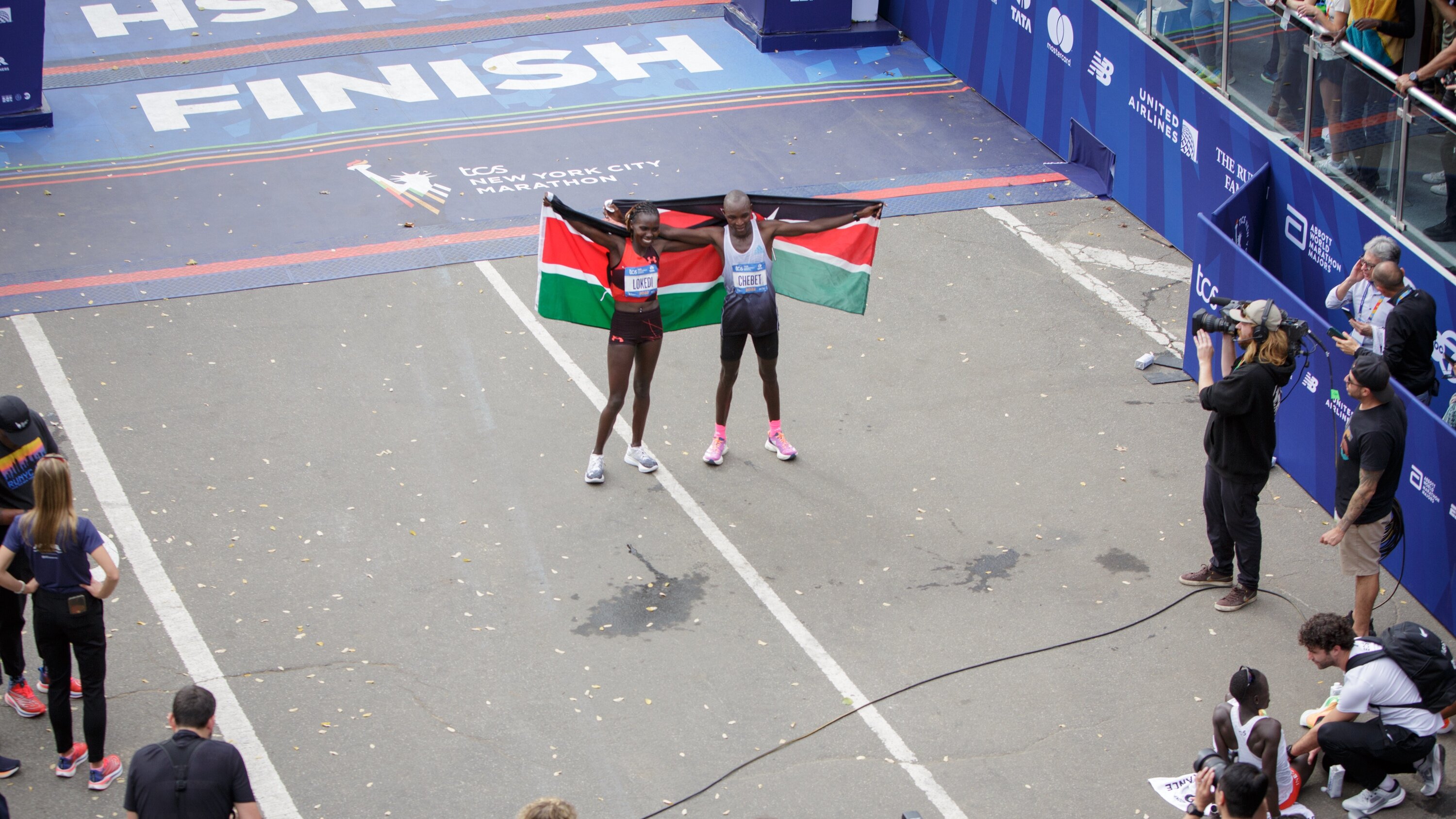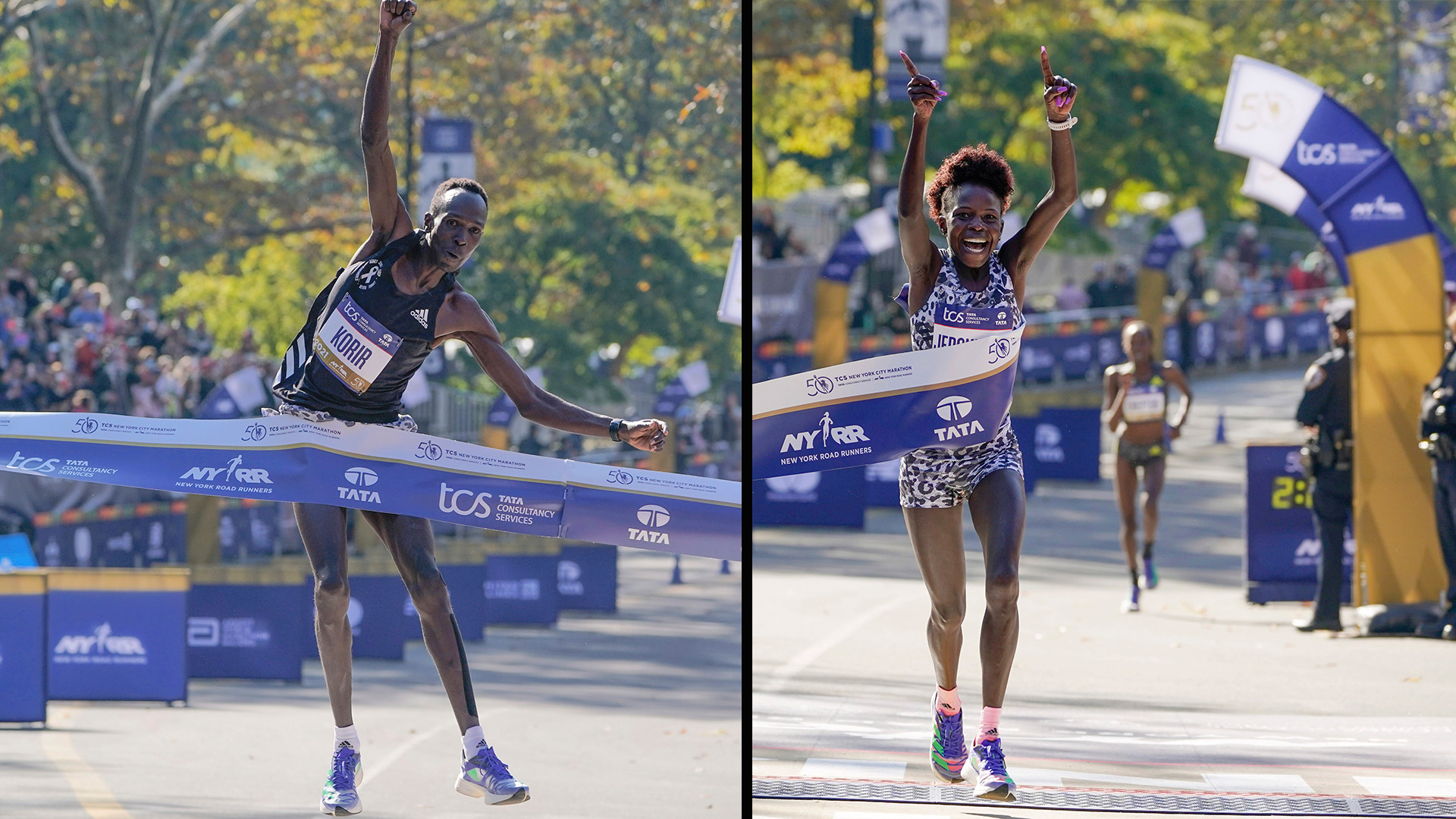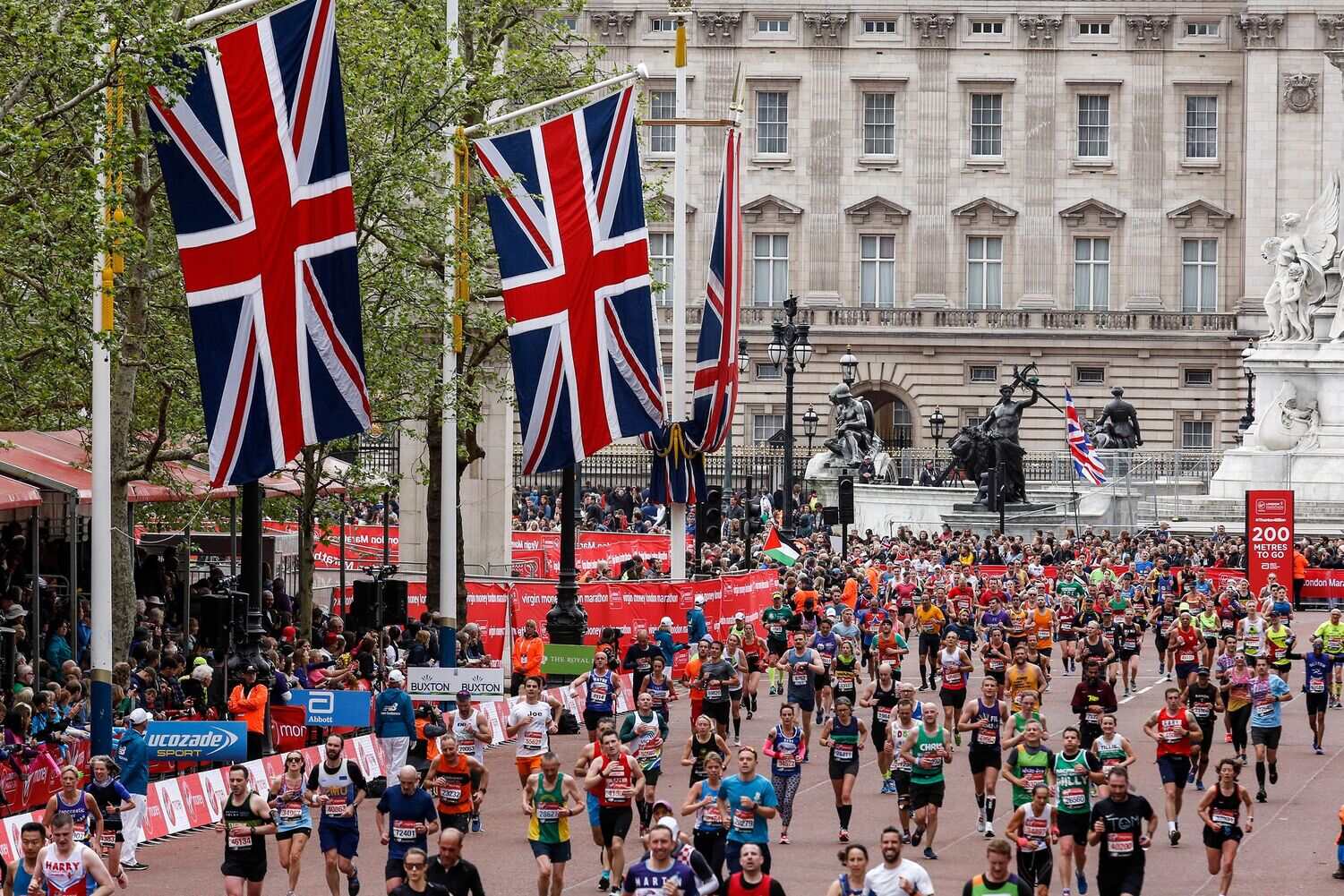

Featured
How To Run The London Marathon
Modified: October 24, 2023
Discover how to run the prestigious London Marathon and be featured in the race of a lifetime. Gain expert tips and advice to conquer the challenge and achieve your running goals.
Introduction
Welcome to the ultimate guide on how to run the London Marathon! If you’ve ever dreamed of participating in one of the world’s most prestigious marathons, this article is for you. Whether you’re a seasoned runner looking to tackle the iconic 26.2-mile course through the streets of London or a beginner seeking a new fitness challenge, we’ve got you covered.
The London Marathon is not just a race; it’s an unforgettable experience that brings together thousands of runners from all walks of life. From the moment you cross the starting line to the exhilarating finish at Buckingham Palace, every step is filled with excitement, determination, and a sense of accomplishment.
This guide will provide you with valuable insights, training tips, and advice to help you prepare for the London Marathon. We’ll cover everything from creating a training schedule to choosing the right gear, from nutrition and hydration to mental preparation and motivation. By the end of this article, you’ll have all the tools you need to embark on your marathon journey with confidence.
Running a marathon is a physical and mental challenge, but with the right guidance and preparation, it’s an achievable feat. Whether you’re aiming for a personal best time or simply want to complete the marathon, this guide will support you every step of the way.
So, lace up your running shoes, get ready to sweat, and let’s dive into the world of marathon training. The London Marathon awaits – let’s make your dream a reality!
Training for the London Marathon
Training for the London Marathon is a crucial step in preparing your body and mind for the grueling 26.2-mile journey. Whether you’re a beginner or an experienced runner, a structured training plan tailored to your fitness level and goals is essential.
The duration of your training will depend on your current fitness level and previous running experience. It’s recommended to allow at least 16-20 weeks of training to adequately prepare for the marathon.
Building a solid base of cardiovascular fitness is the first step in your training journey. Start with a combination of running and cross-training activities such as cycling or swimming to improve your overall endurance and stamina.
As the marathon approaches, gradually increase your mileage and include long runs in your training plan. These long runs are crucial for building endurance and preparing your body for the distance. Aim to complete at least one or two long runs per week, gradually increasing the mileage as the weeks progress.
In addition to long runs, incorporating interval training and speed workouts into your routine will help improve your overall speed and running efficiency. These workouts can include tempo runs, hill repeats, and interval training sessions. Varying your training intensity will ensure you target different energy systems and improve your overall fitness level.
However, it’s important to listen to your body and avoid overtraining. Rest and recovery days are just as important as your training days. Your body needs time to repair and rebuild, so make sure to schedule regular rest days throughout your training plan.
Maintaining a consistent training schedule is key to your marathon success. Set realistic goals and stick to your plan, making adjustments as needed. Remember, consistency is essential for gradual improvement and injury prevention.
Lastly, don’t forget to incorporate cross-training and strength training exercises into your routine. These activities help strengthen muscles, prevent imbalances, and reduce the risk of injuries. Focus on core exercises, leg strengthening exercises, and cross-training activities such as swimming, cycling, or yoga.
Training for the London Marathon is a challenging but rewarding process. By following a well-structured training plan, staying consistent, and listening to your body, you’ll be well-prepared to conquer the race day challenge. Remember, every step you take in training brings you one step closer to achieving your marathon goal.
Creating a Training Schedule
Creating a well-structured training schedule is vital for your success in the London Marathon. A training schedule will not only keep you accountable but also ensure that you gradually build up your endurance and prepare your body for the marathon distance.
When crafting your training schedule, consider your current fitness level, previous running experience, and any time constraints or commitments you may have. It’s important to strike a balance between challenging yourself and avoiding overtraining.
Start by determining how many days a week you can commit to training. Four to five training days per week are typically recommended for marathon training, with one or two rest days for recovery.
Next, establish your long run day. The long run is the cornerstone of marathon training, and its length will increase progressively as the weeks go by. Aim for one long run per week, starting with a distance that challenges you but is still manageable.
Incorporate speed workouts and interval training sessions into your schedule, focusing on developing your speed and running efficiency. These sessions can be done once or twice a week, depending on your fitness level and goals.
Include easy-paced runs in your schedule to build endurance and recovery runs to allow your body to recuperate between more intense workouts. These runs should be at a comfortable, conversational pace.
Don’t forget to incorporate cross-training activities and strength training into your schedule. These activities will help you build overall strength, prevent injuries, and provide variety in your training routine. Aim for two to three cross-training sessions per week.
As you progress through your training schedule, be open to adjusting it as needed. Life happens, and there may be unforeseen circumstances or changes in your body’s response to training. Listen to your body and be flexible with your schedule, making modifications when necessary.
Most importantly, be realistic and patient with your progress. Rome wasn’t built in a day, and marathon training is a gradual process. Don’t compare yourself to others and focus on your own journey.
Keep track of your training progress and make adjustments as you go. A training log can be a helpful tool to monitor your mileage, workout intensity, and how you feel after each session.
By creating a well-structured training schedule and staying committed to your plan, you’ll be well-prepared to tackle the challenges and conquer the London Marathon.
Proper Running Form
Having proper running form is crucial for efficiency, injury prevention, and overall performance. It’s important to focus on developing good running mechanics to optimize your stride and maximize your potential in the London Marathon.
Here are some key principles to keep in mind when it comes to proper running form:
Posture: Maintain an upright posture while running, avoiding slouching or leaning too far forward or backward. Keep your head up, gaze forward, and shoulders relaxed. Engage your core muscles to provide stability and support throughout your run.
Arm Position: Keep your arms bent at around 90 degrees, swinging them from the shoulders back and forth. Avoid crossing your arms over your body, and maintain a relaxed and controlled arm movement.
Foot Strike: Aim for a midfoot or forefoot strike rather than a heel strike. This promotes a more efficient transfer of energy and reduces the impact on your joints. Avoid overstriding and landing with your foot too far in front of your body.
Cadence: Aim for a quick turnover by increasing your cadence, which refers to the number of steps you take per minute. A higher cadence helps reduce the strain on your legs and improves running efficiency. Aim for a cadence of around 180 steps per minute.
Stride Length: Find a comfortable stride length that allows you to maintain proper form and avoid overstriding. Your stride should feel natural and not overly extended.
Breathing: Focus on relaxed, rhythmic breathing. Breathe in through your nose and out through your mouth, allowing for a steady flow of oxygen to support your muscles.
To improve your running form, consider incorporating drills and exercises into your training routine. These can include high knees, butt kicks, and strides to help reinforce proper mechanics and increase your body awareness.
Video analysis or feedback from a running coach can also be beneficial to identify any areas for improvement and give you specific cues and exercises to work on. By honing your running form, you’ll be able to run more efficiently and reduce the risk of injury.
Remember, developing proper running form takes time and practice. Start by focusing on one aspect at a time and gradually incorporate changes into your running technique. With consistency and attention to form, you’ll be well on your way to running the London Marathon with confidence and efficiency.
Choosing the Right Shoes and Gear
When preparing for the London Marathon, one of the most important decisions you’ll face is choosing the right shoes and gear. Having the proper equipment can enhance your comfort, prevent injuries, and optimize your performance on race day.
Running Shoes: Investing in a pair of well-fitting, supportive running shoes is essential. Visit a specialty running store where experts can analyze your foot type, arch shape, and running gait to recommend the right type of shoe for you. Consider factors such as cushioning, stability, and weight.
Running Apparel: Opt for moisture-wicking, breathable clothing that will keep you cool and comfortable during your training and on race day. Avoid cotton material, as it retains moisture and can lead to chafing. Dress in layers to adjust to varying weather conditions.
Socks: Choose moisture-wicking, cushioned socks that offer support and prevent blisters. Look for seamless designs and consider the length of the sock based on your preference.
GPS Watch or Running App: Tracking your runs and monitoring your pace and distance is made easier with a GPS watch or a running app on your smartphone. It can help you set goals, analyze your performance, and keep you motivated throughout your training.
Hydration Gear: Staying hydrated during your training runs and on race day is crucial. Invest in a comfortable hydration belt, handheld water bottle, or a hydration backpack to ensure you have access to fluids at all times.
Reflective Gear: If you plan to train early in the morning or at night, make yourself visible to drivers and other runners by wearing reflective gear. This includes a reflective vest, blinking lights, or reflective strips on your clothing.
Compression Gear: Compression socks, sleeves, or tights can improve blood flow, reduce muscle fatigue, and enhance recovery. Consider incorporating compression technology into your training and recovery routine.
Accessories: Don’t forget to accessorize with a hat or visor to protect your face from the sun and sunglasses to shield your eyes. If necessary, use anti-chafing products like Body Glide or Vaseline to prevent discomfort and blisters.
When choosing gear, it’s important to test it out during your training runs to ensure comfort and suitability. Avoid using brand-new gear on race day to prevent any unexpected discomfort or issues.
Remember, everyone is unique, and what works for one person may not work for another. Take the time to experiment with different brands and styles until you find the shoes and gear that best suit your individual needs.
By choosing the right shoes and gear, you’ll be setting yourself up for success in the London Marathon. Equip yourself with the tools necessary to make your training experience comfortable, efficient, and enjoyable.
Nutrition and Hydration
Nutrition and hydration are critical components of your training and performance in the London Marathon. Proper fueling and hydration strategies will help you maintain energy levels, prevent fatigue, and optimize your performance on race day.
Pre-Run Nutrition: Prioritize complex carbohydrates as the main component of your pre-run meal. Opt for foods like whole grains, fruits, and vegetables that provide sustained energy. Avoid high-fat and high-fiber foods that may cause discomfort during your run. It’s important to experiment and find the timing that works best for you, allowing enough time for digestion before your run.
During-Run Nutrition/Hydration: During long training runs and the marathon itself, replenish your energy and fluids at regular intervals. Experiment with different carbohydrate sources such as energy gels, chews, or sports drinks to find what works best for you. Aim to consume around 30-60 grams of carbohydrates per hour of running and sip on fluids to stay hydrated.
Post-Run Recovery: After completing a long run or the marathon, focus on replenishing your body’s glycogen stores and repairing muscle tissue. Consume a combination of carbohydrates and protein within 30 minutes after your run. This can be in the form of a recovery drink, a balanced meal, or a snack. Rehydrating with fluids that contain electrolytes is also crucial for proper recovery.
Everyday Nutrition: Pay attention to your overall diet and make sure it supports your training. Aim for a balanced diet that includes a variety of fruits, vegetables, lean proteins, healthy fats, and whole grains. Include foods rich in vitamins and minerals to support your immune system and aid in recovery.
Hydration: Proper hydration is vital for optimal performance and health. Hydrate throughout the day, not just during your runs. Check your urine color; it should be a pale yellow color, indicating adequate hydration. During runs, carry a water bottle or use hydration belts or backpacks to stay hydrated. Consider mixing water with electrolyte drinks for longer runs to replace lost minerals.
Supplements: While a well-balanced diet should provide most of the nutrients you need, some runners may benefit from supplements such as multivitamins, omega-3 fatty acids, or iron. Consult with a healthcare professional or registered dietitian to determine if supplements are necessary for you.
It’s important to note that nutrition and hydration strategies should be individualized. What works for one runner may not work for another. Experiment during your training to find the foods, drinks, and timing that suits your body’s needs.
Remember, practice your nutrition and hydration strategies during your long training runs to fine-tune your approach before the marathon. By fueling your body properly, you’ll have the energy and stamina to conquer the London Marathon.
Mental Preparation and Motivation
While physical training is crucial for marathon success, mental preparation is equally important. Long-distance running is as much a mental challenge as it is a physical one. Here are some strategies to help you mentally prepare and stay motivated for the London Marathon:
Goal Setting: Set realistic and specific goals for your marathon. Whether it’s finishing within a certain time, raising money for a charity, or simply completing the race, having a clear objective will keep you focused and motivated during training.
Visualize Success: Use the power of visualization to mentally rehearse your race day. Imagine yourself crossing the finish line, feeling strong and accomplished. Visualizing success helps build confidence and can inspire you during challenging moments.
Positive Self-Talk: Replace negative thoughts with positive affirmations. Use phrases like “I am strong,” “I can do it,” and “I am prepared.” Positive self-talk can boost your confidence and help you overcome doubts during training and the race.
Break it Down: Instead of overwhelming yourself with the entire marathon distance, break it down into smaller milestones or segments. Focus on running one mile at a time or reaching the next water station. This approach makes the task more manageable and less daunting.
Find Your Mantra: Choose a short phrase or mantra that resonates with you and repeats it in your mind during challenging moments. It could be something like “I am strong and resilient” or “I am capable of pushing through.” Your mantra acts as a reminder of your strength and determination.
Build Mental toughness: Push yourself during training to develop mental resilience. Incorporate challenging runs, hills, and speed workouts into your training plan. Overcoming physical and mental obstacles during training will prepare you for the demands of the race.
Stay Present: Focus on the present moment during your training runs and the race. Pay attention to your breathing, your form, and the sensations in your body. Avoid worrying about the miles ahead or dwelling on past performance.
Draw Inspiration: Surround yourself with sources of motivation. Read books, listen to podcasts, or watch documentaries about other runners’ journeys. Connect with fellow runners and join running groups or online communities for support and encouragement.
Celebrate Milestones: Acknowledge and celebrate your training milestones along the way. Whether it’s completing a long run, reaching a new distance, or achieving a personal best time, recognize and reward yourself for your hard work and dedication.
Enjoy the Journey: Remember to enjoy the process of training and embrace the experience of running the London Marathon. Appreciate the journey, the camaraderie among fellow runners, and the incredible atmosphere of the race day itself.
By preparing yourself mentally, you’ll be better equipped to overcome challenges and stay motivated throughout your training and the London Marathon. Cultivating a positive mindset and finding strategies that work for you will help you cross the finish line with a strong spirit.
Race Day Tips
Race day for the London Marathon is an exciting and highly anticipated event. To ensure a successful and enjoyable experience, here are some essential tips to keep in mind:
Get Plenty of Rest: Aim to get a good night’s sleep before the race. Relax and unwind the night before by engaging in calming activities such as reading or listening to soothing music.
Eat a Nutritious Breakfast: Fuel your body with a balanced breakfast that includes carbohydrates for energy and protein for sustained fuel. Stick to familiar foods that you’ve had during training to avoid any digestion issues.
Arrive Early: Plan to arrive at the starting area well in advance to allow time for parking, bag drop-off, and warm-up. Familiarize yourself with the race course, water stations, and restroom locations.
Dress Appropriately: Check the weather forecast and dress in layers accordingly. Wear comfortable, moisture-wicking clothing and don’t forget to attach your race bib securely to your shirt.
Stay Hydrated: Start hydrating early in the day and continue to sip water or sports drinks leading up to the race. Utilize the water stations along the course to stay properly hydrated during the marathon.
Stick to Your Race Plan: Pace yourself and stick to the race plan you’ve prepared during your training. Avoid starting too fast, as this can lead to burnout later on. Run at a comfortable pace and gradually increase your speed as you go.
Take Advantage of Crowd Support: The London Marathon is known for its incredible crowd support. Draw energy from the cheering spectators, high-five kids along the course, and enjoy the festive atmosphere. Their encouragement will propel you forward.
Listen to Your Body: Pay attention to any signs of discomfort or fatigue during the race. Adjust your pace or take short walk breaks if needed. Trust your training and remember that it’s normal to experience ups and downs during a marathon.
Stay Focused: Use your mental preparation techniques to stay focused and motivated during challenging moments. Repeat positive mantras, visualize crossing the finish line, and remind yourself of your training and dedication.
Enjoy the Finish Line: As you approach the finish line, soak in the moment and savor the accomplishment. Raise your arms, smile, and relish in the incredible achievement of completing the London Marathon.
Recovery and Celebrate: After crossing the finish line, take time to cool down, stretch, and refuel your body with fluids and nourishing snacks. Celebrate your accomplishment with friends and family, and give yourself time to rest and recover in the days following the race.
Remember, the London Marathon is a once-in-a-lifetime experience. Embrace the journey, enjoy the race, and be proud of your determination and hard work. Every step you take brings you closer to achieving this incredible milestone.
Post-Marathon Recovery
Congratulations on completing the London Marathon! Crossing the finish line is an incredible achievement, and now it’s time to focus on post-marathon recovery to aid in your body’s healing and rejuvenation. Here are some essential tips to help you recover effectively:
Hydrate: Replenish fluids and electrolytes by hydrating adequately after the race. Drink water, sports drinks, or coconut water to restore hydration levels and aid in recovery.
Nutrition: Refuel your body with a balanced meal or snack that includes a combination of carbohydrates and protein within 30 minutes to an hour after the marathon. This will help replenish depleted glycogen stores and support muscle recovery. Consider foods like bananas, whole grains, lean proteins, and vegetables.
Rest and Sleep: Your body needs time to recover, so prioritize rest and sleep in the days following the marathon. Allow yourself to sleep in and take naps if needed. Respect your body’s signals and avoid strenuous activities until you feel sufficiently rested.
Active Recovery: Engage in light, low-impact activities such as gentle stretching, walking, or easy cycling to promote blood flow and aid in muscle recovery. This can help reduce muscle soreness and stiffness.
Massage and Foam Rolling: Consider getting a professional sports massage or using a foam roller to relieve muscle tension and promote recovery. Focus on areas that feel tight or sore, but be gentle and avoid putting too much pressure on sensitive areas.
Ice and Heat Therapy: If you’re experiencing inflammation or muscle soreness, try alternating between ice and heat therapy. Apply an ice pack or cold compress to reduce swelling and numb pain, followed by a heat pad or warm shower to relax muscles and improve blood flow.
Gradual Return to Training: While it’s essential to rest, you can gradually ease back into light, low-intensity activities after a few days of recovery. Listen to your body and start with short, easy runs or cross-training sessions. Give yourself time to rebuild your fitness gradually.
Mental Recovery: Pay attention to your mental well-being after the marathon. Reflect on your accomplishment and acknowledge the hard work and dedication that led you to the finish line. Take time to appreciate and celebrate your achievement.
Set New Goals: Once you’ve recovered, consider setting new goals and targets for your next running challenge. This will help keep you motivated and maintain your running momentum.
Remember, post-marathon recovery is as important as the training itself. Give your body the time it needs to heal and recover fully. Be patient with yourself and allow for a gradual return to regular training. Embrace the recovery process and savor the memories of your London Marathon experience.
Conclusion
Congratulations on completing this comprehensive guide on how to run the London Marathon! The journey to this iconic race is filled with dedication, training, and determination. By following the tips and strategies outlined in this guide, you are well-equipped to tackle the challenges and make the most of your marathon experience.
From training for the marathon to focusing on proper running form, choosing the right gear, and taking care of your nutrition and hydration, every aspect of your preparation is crucial. Additionally, mental preparation and motivation play a vital role in your success. By setting goals, visualizing success, and staying focused, you can overcome any obstacles that come your way during training and the race itself.
Remember, running a marathon is not just about the physical aspect—it’s a test of mental strength, endurance, and resilience. Embrace the journey, enjoy the race day atmosphere, and celebrate your accomplishment. The London Marathon brings together a community of passionate runners from around the world, and you are a part of that inspiring group.
As you recover and reflect on your marathon experience, take pride in the dedication and hard work you put into your training. Give yourself time to rest, recover, and set new goals for future challenges. Whether it’s a faster time in the next marathon or a completely different distance, keep pushing yourself and enjoy the thrill of running.
Running the London Marathon is an incredible achievement, and your dedication and commitment have brought you to this great milestone. Cherish the memories, share your story with others, and inspire fellow runners to chase their own dreams.
Now, it’s time to lace up your shoes and embark on your marathon adventure. The London Marathon awaits with its vibrant energy, cheering crowds, and the sense of accomplishment that comes with crossing that finish line. Embrace the challenge, trust your training, and let the spirit of the marathon carry you to new heights of achievement.
